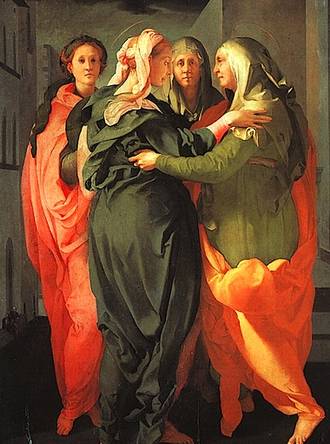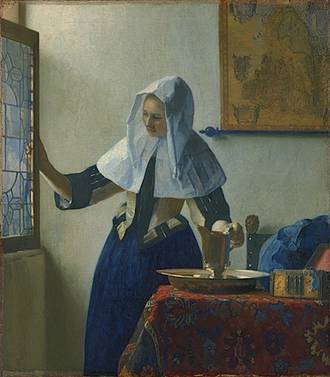What does the great Dutch painter Vermeer (1632–75) have in common with Pontormo, the Florentine Mannerist (1494–1557)? At first glance, nothing. They were born in different parts of Europe almost a century and a half apart. But there here are two paintings, one by each artist, and whenever I see one of them, I’m always reminded of the other.

How can a 15th-century Mannerist, painting in an age and a city where princely families and the Catholic church commissioned great works of art, possibly have produced anything faintly similar to the output of a bourgeois, struggling Dutch painter whose patrons–the few he had–were mere artesans?

What is it that makes these two works seem alike–at least to me? Is it the bold use of colour, for which Pontormo is so famous. Because Vermeer’s use of colour is extraordinary too. That great slab of lapis-blue skirt. The way the ruddy hues of the carpet are reflected in the jug and silver dish. Is it the crisp folds of the drapery and the shadows they cast? Is it the faint sfumato that softens the outlines of the faces? Is it the peculiar, detached absorption with which the women are going about their tasks: the one a housewife, immersed in domestic chores; the others biblical characters, playing the ineluctable roles they have been cast? Is it the economy with which each image reduces itself to the essentials, with only the merest incidental detail (the man in the background of the Pontormo picture; the silk thread hanging out of the trinket box in the Vermeer)? Or is it the way the light falls upon the women’s skin, illuminating it, making it gleam (the housewife’s right arm as she opens the casement; the hands of the Virgin and St Elizabeth)? Or is it perhaps the way that the human figures seem like props while the stage sets they occupy are three-dimensional?
Both these paintings were intended for secluded contemplation: one in a church, the other in a private dwelling. I love them both.






